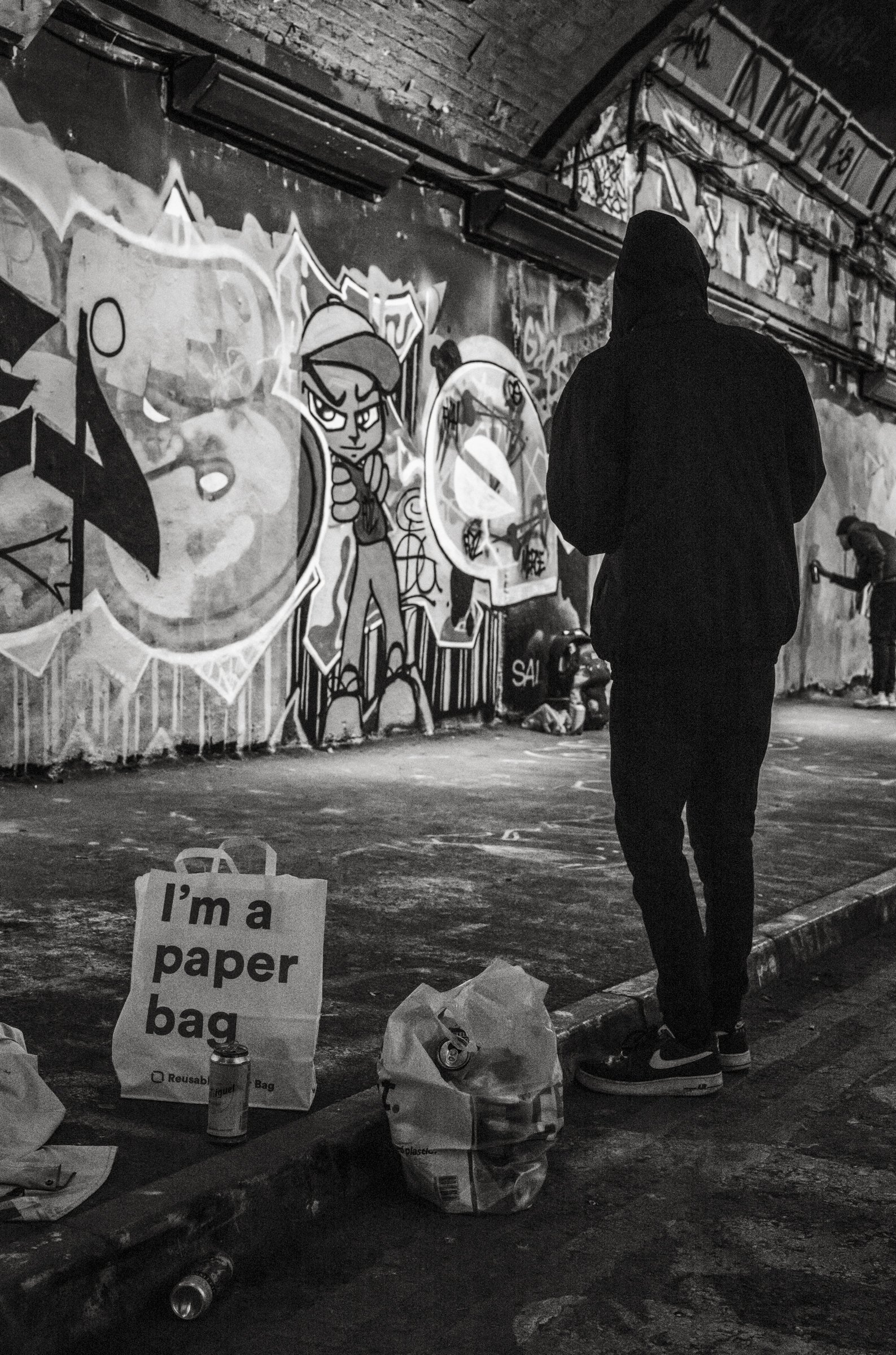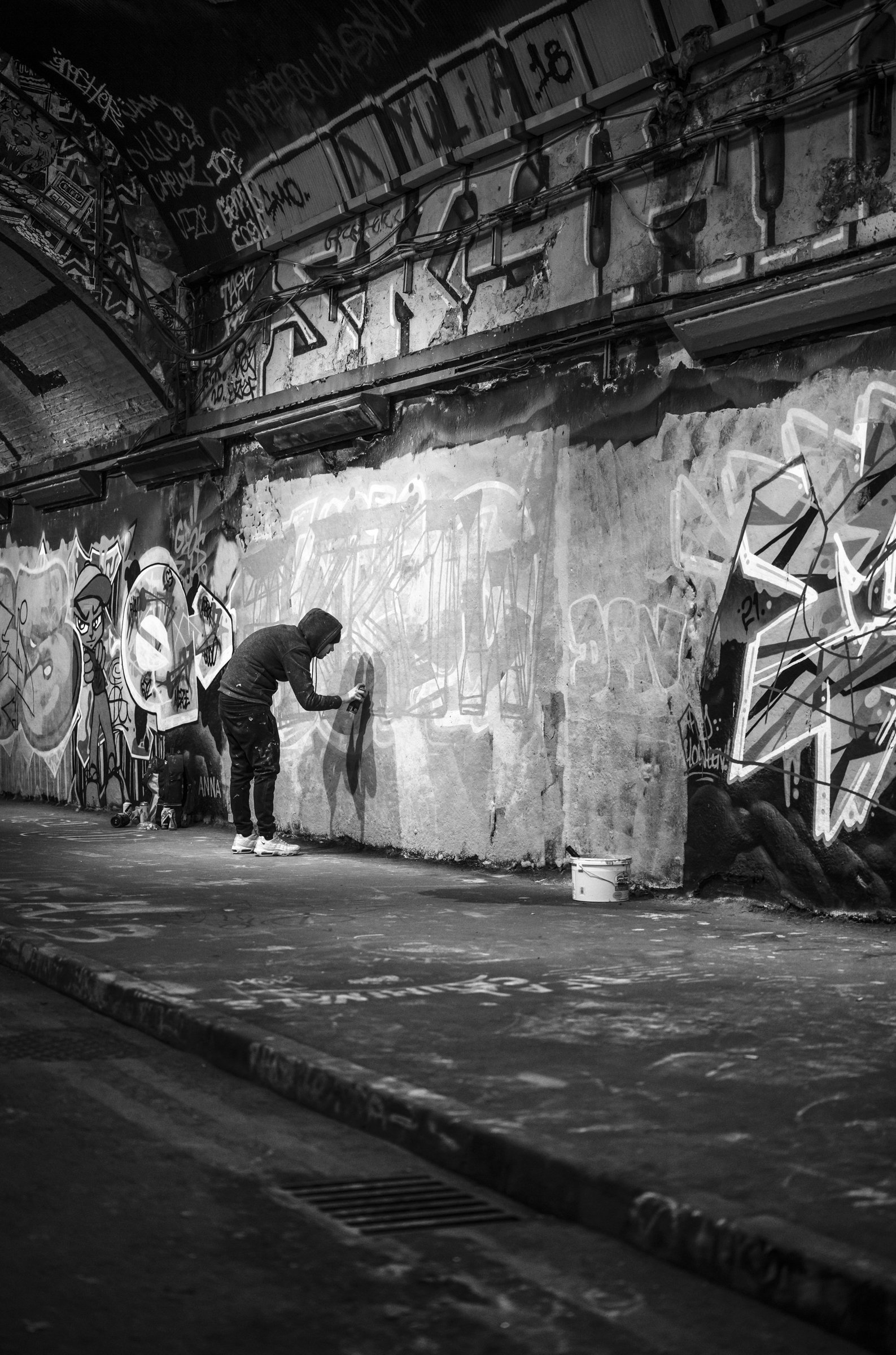Why the Leica M10 Monochrom?
I’ve been asked this question many times before. Why do you use a camera that can only produce black and white photographs? My tool of choice is the latest monochromatic model from Leica, the M10 Monochrom and my first step into the world of Leica digital photography. The decision to purchase this camera, besides the significant cost was an easy one. I had to make sacrifices in order to achieve ownership, but I knew that it was a camera that would fit my creative requirements. The camera that I use doesn’t define my photography or the type of photographs that I make but the M10M is my perfect partner in terms of functionality and output.
The M10M provides me with the basic controls needed to produce a photograph. No gimmicks or features that are unnecessary to me. The technology contained within many cameras these days is incredible. An abundance of features provides people with huge creative possibilities for both photography and videography. The importance of photography and the skills required to make good photographs seems unfortunately to be of less interest to many people than discussions around the tools required to make them. I’m aware that this blog post is focused on my use of the M10M but rather than being a review of the camera I wanted to focus on how it suits my requirements for black and white photography.
With previous cameras that I have owned, Additional features such as video weren’t of use to me. The Leica M10M provides me with the bare essentials that I require to make a photograph. I have all the control I need, all the resolution I need, and the high ISO performance that allows me to photograph at any time of day or night. Combining those attributes with a camera that is built to a very high standard means the M10M is pretty much my perfect partner. I would appreciate a longer battery life but carrying a couple of spares isn’t really a problem. With the recent addition of the M11 and its improved battery It may be a feature that carries over to any subsequent Monochroms that are released.
A view from the top of Cheddar Gorge in Somerset
Using the Leica M10 Monochrom for Landscape Photography
Putting aside the price of equipment, although relevant, I’ve always been quite surprised that more people don’t use Leica M cameras for landscape photography.
I understand both the historic and continuing association between Leica M cameras and documentary photography. There is a long and distinguished list of photographers who have built their careers around this small, unobtrusive camera system. This connection between Leica M cameras and documentary genre of photography is now so ingrained in its reputation that they are seldom considered for use, at least with the observations that I have made, for other genres that they may be equally suited to.
I use my M10M for everything. I have so far found no limitations to what I can use the camera for. Family photos, street photography and landscape are al. With limited fps and telephoto lens choices it may not be the best choice for sports or wildlife photography but that’s not to say it couldn’t be used for that. You only have to look at Joshua Pauls Formula One photos made with a 100+ year old 4x5 view camera to see that the limitations of what’s possible, is usually dependant on the photographer and not the tool they are using.
The question of the Leica M’s suitability for Landscape photography was one that I considered carefully before moving to the system. At the time of deciding on whether to move to Leica I was using the Fujifilm GFX and had been extremely pleased with it. At the same time, I had been using a Leica M3 for street photography and family days out and started to really enjoy and look forward to using the camera. When the M10M was announced, it appeared on paper to be the perfect camera for me. I was given the opportunity to use both an M10 and M10M while on a trip to Glencoe in the Scottish Highlands. The experience with these cameras was brief but it became obvious to me, especially in the case of the M10M that it was a very special camera. I placed my pre-order for the camera a couple of days after returning home and put all my existing equipment up for sale.
The view from a location called Dear leap on the Mendip Hills, Somerset. Glastonbury Tor can be seen in the distance.
Clouds roll over the hills. Scotland, March 2022.
What makes the M10M suitable for landscape photography?
I’ll speak about this from the viewpoint of the M10 Monochrom as it is the camera that I own but many of the points will apply to all M system cameras.
Over the years I have tried to reduce the amount of equipment that I carry. With many systems of the past, I would be required to carry a backpack full of equipment. Camera, lenses, filters, tripod and even a separate bag for film holders when I was using a large format camera.
Currently I use a Billingham Hadley pro with camera and two or three prime lenses, some spare batteries a cable release and an l-bracket when using a tripod. Occasionally I will take a LEE filter set with me, but this is becoming less common due to the conditions that I prefer to photograph in and the capabilities of the camera. Having a simple setup and less to carry is a welcome positive of owning this camera. I use a yellow filter on the lens almost 100% of the time but do have orange and red filters in my bag if required. Because you can’t manipulate individual colour channels when editing M10M files a colour filter is used to control contrast the same as if using black and white film.
I have used cameras with bigger and higher resolution sensors than that of the Monochrom but it is the first camera that I have owned that has a dedicated monochromatic sensor. The image quality is truly remarkable, aided by the incredible lenses that are available for it. My favourite lens at this point is the Voigtlander 50mm APO Lanthar which many of my photographs are made with. My dream lens collection would consist of the Leica 35mm, 50mm, 90mm and 135mm APO lenses. A 50mm 1.2 Noctilux would be another welcome addition. I am waiting for delivery of the Voigtlander 35mm APO which I believe will be another lens suited to the high-resolution capabilities of the M10M.
Fine rain shrouds the hills in the distance and birds fly close to the side of Cheddar Gorge in Somerset, England.
The low light performance of this camera is also beyond anything else that I have used. My attitude towards photographs made at higher ISO settings has changed as I have matured as a photographer. The M10M can produce exceptionally clean photographs free of grain even at higher ISO settings. When required I am happy to push the camera to its limits though and will not obsess over keeping the ISO at its base setting. Visible grain at really high ISO, rather than being detrimental can add another layer of abstraction and additional atmosphere to a photograph. The beauty of the M10M is that high ISO images appear organic and film like rather than appearing to have an emphasised digital signature that is apparent in other cameras. Of course, if I want to ensure maximum detail and tonality I will use the lowest ISO possible but not at the risk of missing a photograph. I prefer to photograph the landscape during the late autumn and winter months. When the leaves have fallen from the trees and the skies come alive. The dark and slightly abstract nature of my photographs is not reliant on clinical image perfection and the addition of grain when the use of higher ISO settings is required is of little consequence.
The River Etive feeding into Loch Etive. Scotland March 2022.
A concern that I had when reading the reviews of previous Monochrom cameras was that highlights could easily be blown out. If you are considering this camera and have concerns about this, it really isn’t an issue. I’ve blown highlights out when I haven’t been paying attention, but this is true of any camera. What I will say is that on the odd occasion where I have overexposed and lost detail in the highlights the transition between areas with no detail and areas with detail is extremely smooth. The built-in live view function and hot shoe mounted Visoflex are great for keeping an eye on exposure and the pinch to zoom touch screen is easy to use. The live view is great for reviewing images and checking focus quickly and easily. Battery life is quite considerably reduced when using these features, so it is a good idea to have a couple of spare batteries with you just in case.
The camera isn’t weather sealed, but the build quality is exceptional. I’ve used the camera in wind, rain and storms and never had any issues. I wipe it off regularly and in heavy rain I use a cheap cover that I picked up online to keep most of the rain off. I had a wave crash over my head during a recent storm soaking my camera and lenses. I gave everything a wipe off when I got home to make sure the salt water was cleaned off and everything continued to work perfectly.
The M10 Monochrom is without doubt a superb camera and I have no regrets in choosing it as my tool of choice. Apart from the considerable cost which of course is a deciding factor for anyone purchasing a camera and the reduced battery life when using certain features as mentioned above.
To sum up, the M10M and a set of lenses is small and easy to carry. Image quality is superb even at high ISO and the build quality is good enough that you can use the camera in all conditions. An M-series camera may not suit everyone for the pupose of landscape photography but there is no denying that it is more than capable.
Matt.



